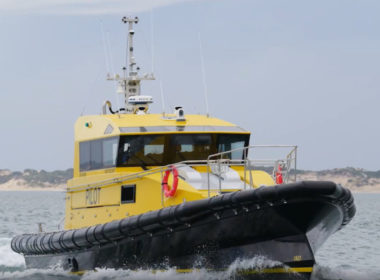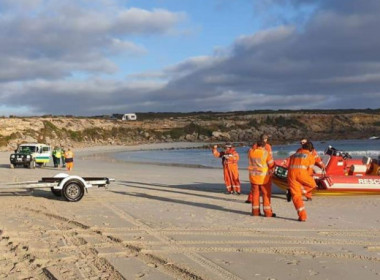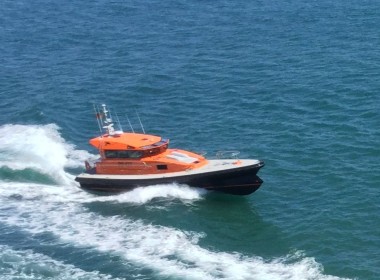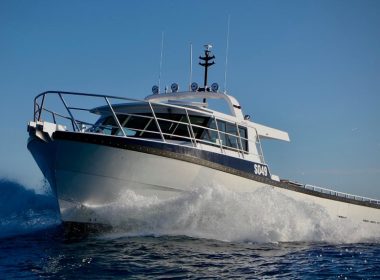VESSEL REVIEW | Spirit – Versatile pilot boat for South Australia port operator

South Australian port operator Flinders Ports has expanded its fleet of harbour services vessels with the recent acquisition of a newbuild pilot boat constructed by Hart Marine in the neighbouring state of Victoria.
Spirit is the first in a series of three pilot boats ordered by Flinders Ports from the same builder. Utilising composite material and a hull design developed by French naval architecture firm Pantocarene, the boat features a lightweight yet corrosion-resistant structure that boasts durability even under harsh marine conditions.
The boat has an LOA of 17.55 metres (57.5 feet), a beam of 5.24 metres (17 feet), a depth of 2.15 metres (7.0 feet), and a top speed of 35 knots courtesy of two Volvo Penta D13-700 diesel inboards that each produce 515 kW (690 hp) at 2,300 rpm.
Compact, versatile boat designed for extreme conditions
“We were looking to upgrade our pilot boat fleet and looking for updates to safely and to more effectively provide pilot transfers in rough sea conditions,” Flinders Ports told Baird Maritime. “We wanted to innovate and upgrade our fleet to be competitive and port industry leaders, and so we required a fit-for-purpose vessel that could achieve multiple activities, such as surveying and occasional emergency response.
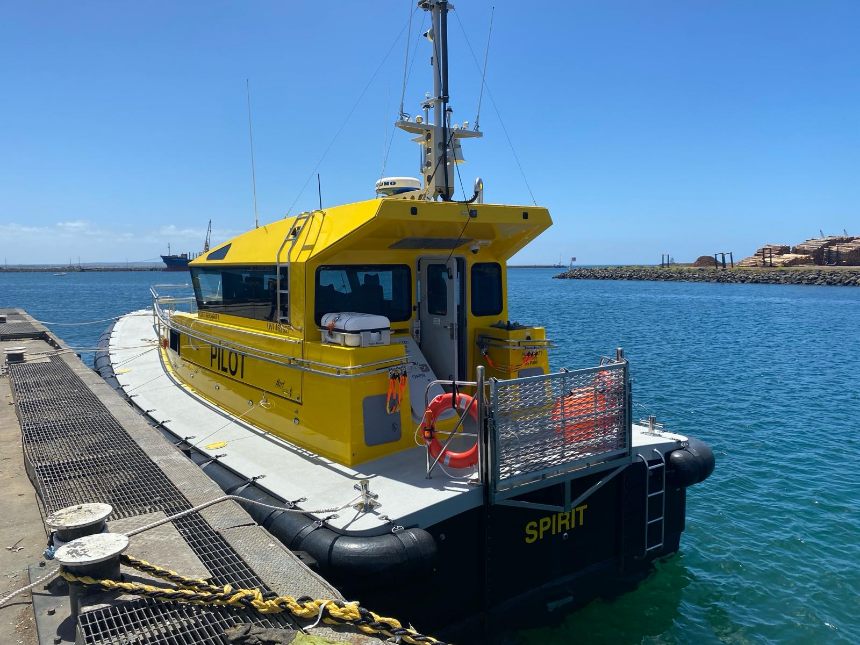
The owner added that it worked closely with Hart Marine to discuss safety options when preparing to upgrade its fleet so that pilots will be as safe as possible when operating in open waters. Since the Flinders Port fleet needed to be able to operate in such waters regardless of weather, it needed improvements in terms of fuel efficiency, reliability, and safety features.
“Spirit will provide 24/7 pilot transfer services as required by schedules in all channels and berths under the governance of Flinders Port Holdings, including our Regional Ports. These areas include Flinders Adelaide Container Terminal, the port of Port Adelaide, as well as the six key regional ports of Port Giles, Port Lincoln, Wallaroo, Port Pirie, Klein Point, and Thevenard.”
A wave-piercing, beak bow design facilitates smooth navigation in turbulent waters, significantly reducing vertical acceleration and ensuring stability for pilots. The vessel’s self-righting capabilities have been rigorously tested and proven, guaranteeing autonomous recovery from a capsized position.
A change in the vessel’s size provides pilots and crew with additional room on the outer deck for pilot transfer and coxswain activities.
The boat also has continuous railing, thus providing a safety barrier for crew and pilots. Low-noise technology meanwhile further enhances the vessel’s operational environment
Responsive propulsion for various operating modes
“The equipment on board is new to the industry,” added Flinders Ports. “For instance, we believe the Volvo Penta inboard performance system (IPS) is an effective solution with fewer maintenance requirements. This also enhances fuel efficiency, reduces its environmental footprint, and improves sustainability. It also gives us the option to operate with an alternative fuel.”
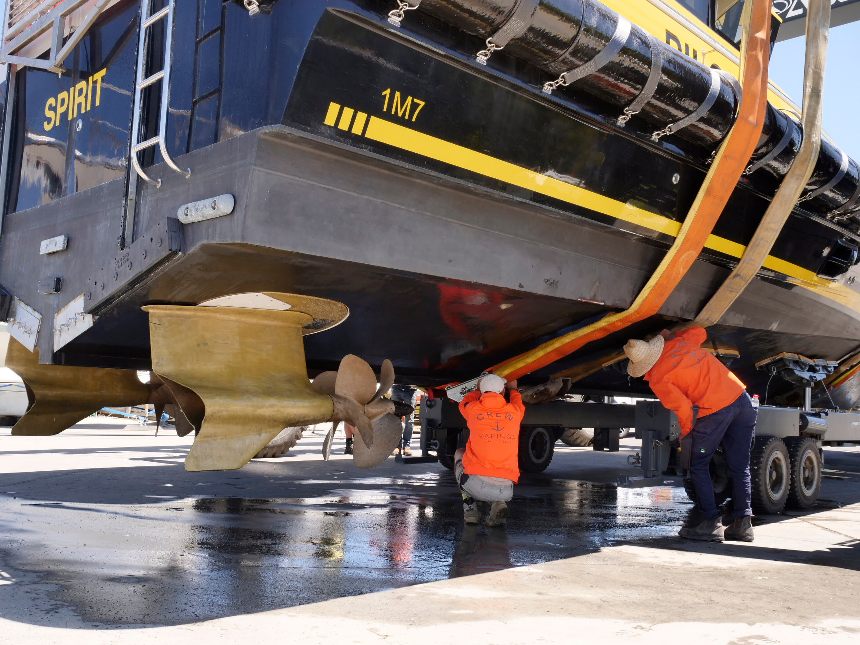
The owner said that, with the new engine set, the mechanical layout was reduced from four major parts to only three. This translates into less downtime and more uptime, permitting the boat to provide a greater scope of service to customers.
“As there are fewer mechanical parts compared to shaft propellers, this offers us more functions along with dynamic propulsion,” Flinders Ports told Baird Maritime. “At the push of a button, the vessel will maintain its stationary position regardless of the wind or tide.”
The owner added that launch masters have also used this feature successfully when undertaking surveyor transfers to stationary ships at anchor. Also, if there was to be a man overboard situation, retrievals would be easier with the vessel being able to hold its position more effectively.
Full electronics and safety suite
Flinders Ports said Volvo’s proprietary engine management system provides information about parameters such as oil use, water level, pressure, and temperature. This then helps develop a better understanding of how the vessel operates with the aim of optimising maintenance.
The vessel also has automatic trim tabs, which have the ability to reduce pitch and roll in heavy seas while helping to maintain a straight course. This ensures a smoother and more comfortable ride and reduces fatigue.
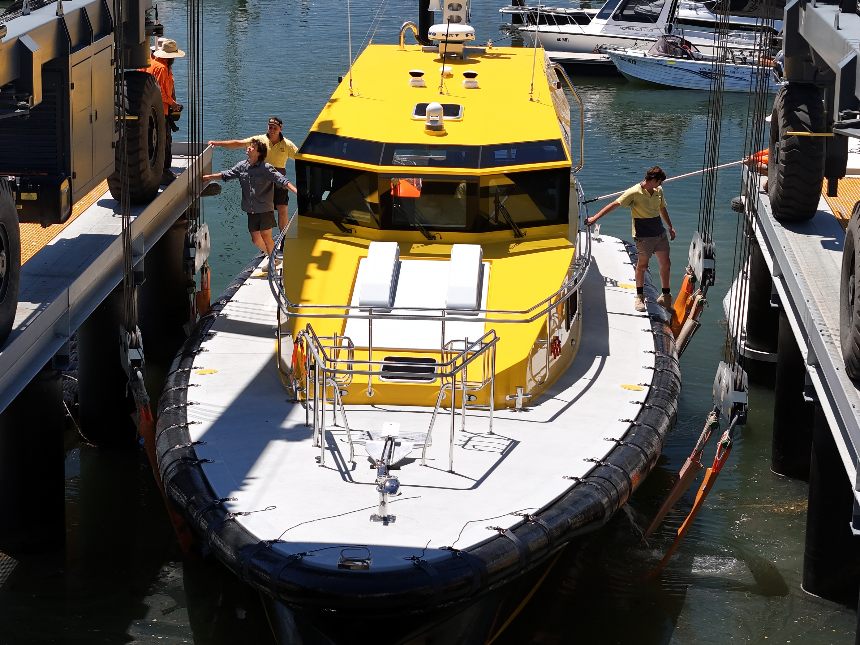
“Combined with having a joystick aft, our pilots are able to operate with increased safety, more comfortably, and with better visibility of ships and of people boarding and disembarking. The IPS has the ability to be put in docking mode and manoeuvred forwards, sideways and in reverse, from two positions on the vessel.”
The electronics suite includes Marfle, which Flinders Ports says provides a greater level of detail on telemetry and vessel monitoring. The system records all information regarding the operation of the vessel and the management of its engine.
“On a voyage, we can measure speed, fuel usage, rpm and other data, metre by metre.”
Other electronics include a radar, a GPS, an AIS, and a depth sounder from Furuno, and an ICOM VHF radio. These and the other onboard systems draw power from a Kohler 9kVa generator.
KAB seats are available for the occupants while an eight-person liferaft with EPIRB is also fitted should evacuation become necessary.
| Spirit | |
| SPECIFICATIONS | |
| Type of vessel: | Pilot boat |
| Classification: | 2C |
| Flag: | Australia |
| Owner: | Flinders Ports, Australia |
| Designer: | Pantocarene, France |
| Builder: | Hart Marine, Australia |
| Hull construction material: | FRP |
| Superstructure construction material: | FRP |
| Deck construction material: | FRP |
| Length overall: | 17.55 metres (57.5 feet) |
| Length waterline: | 16.57 metres (54.3 feet) |
| Beam: | 5.24 metres (17 feet) |
| Depth: | 2.15 metres (7.0 feet) |
| Main engines: | 2x Volvo Penta D13-700, each 515 kW (690 hp) at 2,300 rpm |
| Gearboxes: | 2 x ZF 200A |
| Generator: | Kohler, 9.0 kVa |
| Maximum speed: | 35 knots |
| Electronics supplied by: | Mornington Peninsula Electrics |
| Radar: | Furuno |
| Depth sounder: | Furuno |
| Radio: | ICOM M605 25W VHF |
| GPS: | Furuno GP39 |
| Plotter: | Furuno |
| AIS: | Furuno FA170 |
| Fendering: | Advanced Innergy Solutions |
| Coating: | Intersmooth anti-fouling |
| Seating: | KAB |
| Safety equipment: | Lifejackets |
| Liferaft: | Plastimo Transocean |
| Type of fuel: | Diesel |
| Fuel capacity: | 3,000 litres (792 gallons) |
| Freshwater capacity: | 120 litres (31.7 gallons) |
| Crew: | 2 |
| Passengers: | 6 |
| Operational area: | South Australia |


